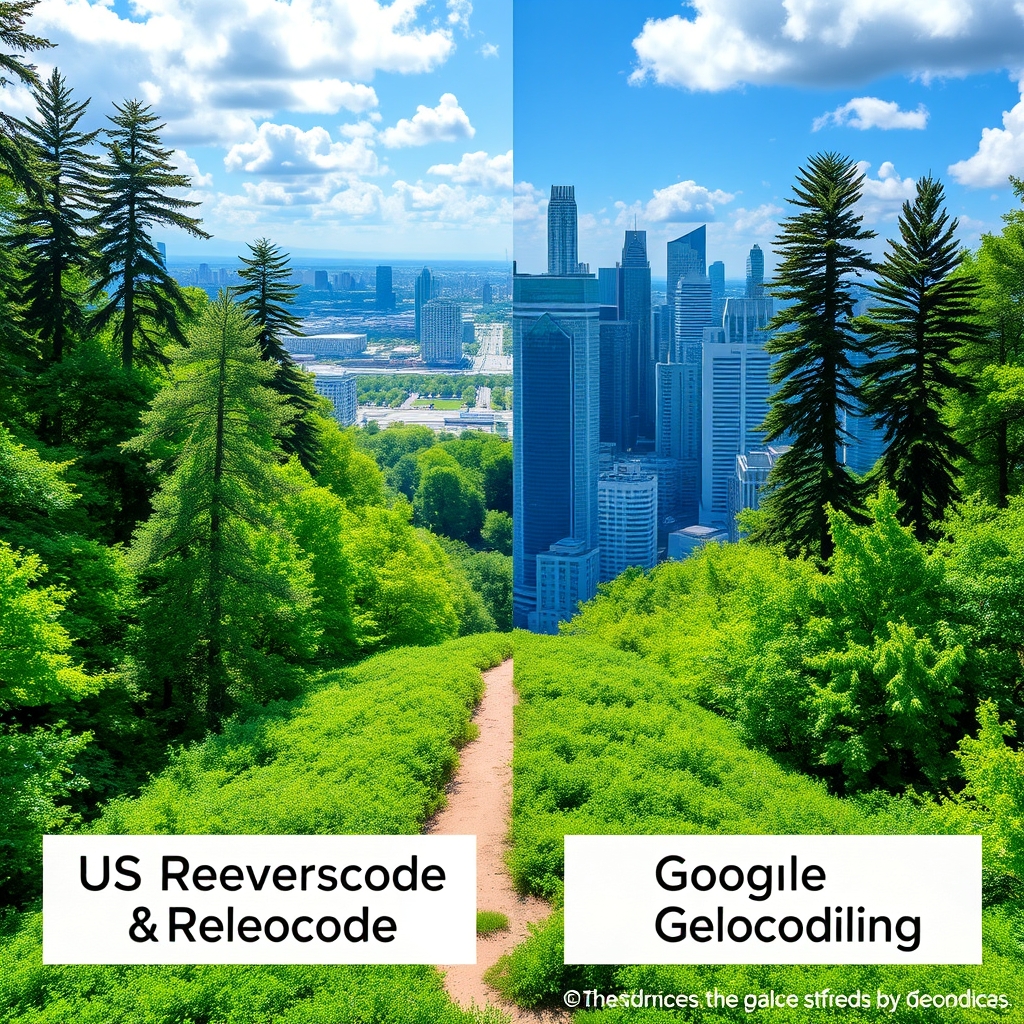US Reverse Geocode API vs Google Geocoding API: What to Choose?

When it comes to location-based services, developers often face the challenge of choosing the right geocoding API. Two prominent options are the US Reverse Geocode API and the Google Geocoding API. Both APIs offer unique features and capabilities that cater to different needs in the realm of geolocation. In this blog post, we will delve into a detailed comparison of these two APIs, examining their features, performance, scalability, and use cases to help you make an informed decision.
Overview of Both APIs
The US Reverse Geocode API is designed to enhance location-based services by accurately converting geographic coordinates into human-readable addresses. This API is particularly useful for applications that require real-time or batch processing of location data, making it indispensable across various industries such as logistics, real estate, and navigation.
On the other hand, the Google Geocoding API provides a comprehensive solution for converting addresses into geographic coordinates and vice versa. As part of the Google Maps suite, this API leverages Google's extensive geographic database, allowing developers to integrate geocoding capabilities seamlessly into their applications. It is widely used for address validation, mapping, and enhancing user experiences in applications that rely on accurate location data.
Feature Comparison
US Reverse Geocode API Features
One of the standout features of the US Reverse Geocode API is its ability to reverse geocode, which involves converting latitude and longitude coordinates into meaningful location data. To utilize this feature, developers must provide valid latitude and longitude parameters. The API then returns detailed information such as street addresses, city names, state names, postal codes, and geographic coordinates.
Example Response:
{
"message": "Response is not available at the moment. Please check the API page"
}This response indicates that the API is currently unable to provide data, which can occur due to various reasons such as server issues or invalid parameters. Developers should implement error handling to manage such scenarios effectively.
Google Geocoding API Features
The Google Geocoding API offers two primary features: geocoding and reverse geocoding. The geocoding feature allows developers to convert addresses into geographic coordinates. To use this feature, developers simply need to provide the street address in a format accepted by the national postal service of the respective country.
Example Response for Geocoding:
{
"address": "Jacarandaes 6207",
"latitude": "",
"longitude": "",
"status": "success"
}This response structure includes the address, latitude, longitude, and status fields. The status field indicates whether the request was successful, while latitude and longitude fields would typically contain the corresponding geographic coordinates.
For reverse geocoding, developers enter latitude and longitude parameters to obtain detailed address information.
Example Response for Reverse Geocoding:
{
"address": "Hollywood, Los Angeles, CA 90028, USA",
"latitude": "34.101847299999996",
"longitude": "-118.326292",
"status": "success"
}In this response, the address field provides a complete address based on the given coordinates, while latitude and longitude fields confirm the input values. The status field again indicates the success of the request.
Example Use Cases for Each API
The US Reverse Geocode API is particularly beneficial for applications in logistics and delivery services, where accurate address retrieval is crucial for route optimization. For instance, a delivery app can use this API to convert GPS coordinates from a user's location into a precise address, ensuring that packages are delivered accurately.
Conversely, the Google Geocoding API excels in applications that require address validation and mapping. For example, an e-commerce platform can utilize this API to verify customer addresses during checkout, reducing the likelihood of shipping errors and enhancing customer satisfaction.
Performance and Scalability Analysis
When evaluating performance, the US Reverse Geocode API is known for its speed and reliability, particularly in scenarios that demand real-time processing. Its large geodatabase ensures that users receive accurate results quickly, which is essential for applications that rely on immediate location data.
In contrast, the Google Geocoding API benefits from Google's extensive infrastructure, allowing it to handle a high volume of requests efficiently. This scalability makes it suitable for applications with fluctuating demand, such as mobile apps that experience varying user traffic.
Pros and Cons of Each API
US Reverse Geocode API
- Pros:
- High accuracy in reverse geocoding.
- Fast response times for real-time applications.
- Comprehensive location data including postal codes and city names.
- Cons:
- Limited to U.S. locations, which may not be suitable for global applications.
- Less extensive documentation compared to Google.
Google Geocoding API
- Pros:
- Global coverage with extensive geographic data.
- Robust documentation and community support.
- Integration with other Google services enhances functionality.
- Cons:
- Potentially slower response times during peak usage.
- Complex pricing structure for high-volume applications.
Final Recommendation
Choosing between the US Reverse Geocode API and the Google Geocoding API ultimately depends on your specific use case. If your application is focused on U.S. locations and requires high accuracy in reverse geocoding, the US Reverse Geocode API is an excellent choice. Its speed and reliability make it ideal for logistics and real-time applications.
However, if your application requires global coverage, address validation, and integration with other Google services, the Google Geocoding API is the better option. Its extensive documentation and community support can also facilitate smoother development processes.
In conclusion, both APIs offer valuable features and capabilities that cater to different needs in the geolocation space. By understanding their strengths and weaknesses, developers can make informed decisions that align with their project requirements.
Ready to test the US Reverse Geocode API? Try the API playground to experiment with requests.
Ready to test the Google Geocoding API? Try the API playground to experiment with requests.





